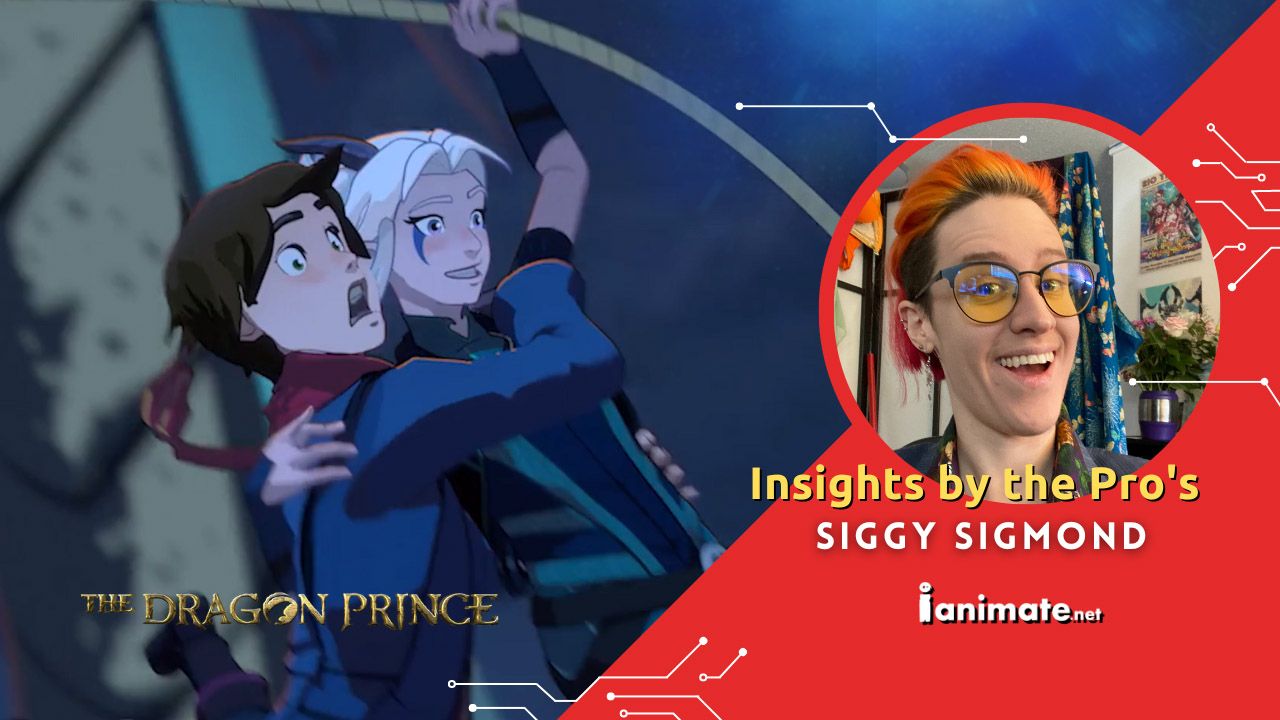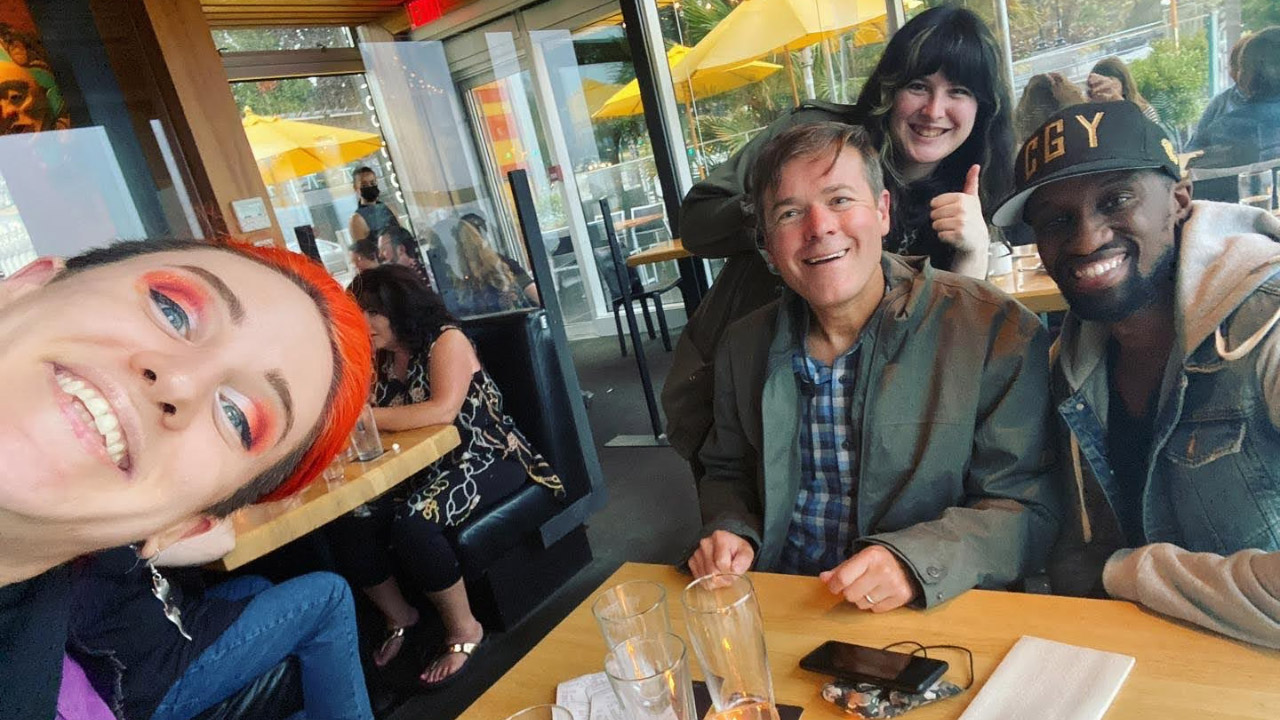Insights by the Pros with Bioware Cinematic Animator Siggy Sigmond
Bioware Cinematic Animator and iAnimate Alumni Siggy Sigmond share his stories and inspirations and how he succeeded in his animation journey.
Siggy Sigmond is an artist with experience in Animation, Pre-Vis, and Layout. He worked in Television, Feature Film, and Visual Effects. He has been with Bioware for over 9 months. One of his friends from a Star Wars fan group saw his work and recommended him to the company. He is a fun-loving comic and theatre nerd. Siggy dance and perform when he’s not animating or painting.

Alumni Interview
Animation Journey and Inspiration
iAnimate: Tell us a bit about your animation journey and throughout your time with us. Who or What inspired you to become an animator? How did you become an animator, and when did iAnimate become part of your journey?
Siggy: It was either become an animator or a surgeon. I've always had a huge passion for art, anatomy, and the illusion of life. My father would take his hold surgery textbooks and walk me through how things move and work. Since then, I've been fascinated with the illusion of motion and how it affects the human psyche. I feel like a wizard sometimes. I trick people into feeling feelings for a thing that doesn't actually exist.
iAnimate: Can you tell us more about your role and responsibilities?
Siggy: I'm a cinematic animator right now. It's not unlike working for film and television. The added bonus is the experience I've gained working with game engines. The more unique aspects of my current position lie in how much more creative input I have over the larger production. I've been able to develop character and movement bibles. Give rig feedback. Develop a bunch of cycles that are used as the basis for characters throughout the entire game. It's really invigorating.
iAnimate: What do you do to stay inspired and motivated animator?
Siggy:
That's so difficult to answer. I've worked across the industry in all sorts of roles. I think my favorite projects have been, His Dark Materials, TMNT (2012), The Dragon Prince, and Dragon Age: Dreadwolf.
Each production taught me something unique. It pushed me as an artist in ways I didn't expect. Teenage Mutant Ninja Turtles was one of the first contracts I was on where I felt my skills improving on every episode. I had such a supportive team. The person I was sitting next to was a real master. He would give me demos and answer my questions. It was so nice to have a senior be that patient and kind to me.
The Dragon Prince was a show I helped launch. It was such a different style that it took me a little while to adjust. It taught me how to approach animation from a 2D and 3D perspective. I had to learn a lot of unique ways to animate stepped animation to camera. One of my shots was even shown at the Daytime Emmys when Dragon Prince won "Outstanding Children's Animated Series."
His Dark Materials was not only one of my favorite book series as a kid, but it was also my first ever VFX production. It was a fantastic production to break into VFX on. It really challenged me to create hyper-realistic creature animation in a very limited amount of time. I had to get really good really fast. Dragon Age: Dreadwolf has given me creative licence with a project I've never had before. I've even had to do a bunch of character design turnarounds using my skills as an illustrator. I've had the opportunity to sculpt movement and personality across a broad range of characters. Something I've never had a direct hand in before. It's also taught me a lot about game engines and the different obsticals you face when animating for games. Given the way the industry is moving, I'm sure that knowledge will come in handy in the future.

Animation Lessons and Growth
iAnimate: How did iAnimate help prepare you for the industry? What were the most important things you learned at iAnimate?
Siggy: iAnimate has been fundamental for my rapid advancement in the industry. It helped me become a much more malleable animator. I've been using iAnimate to help me gain skills that I may not have the time or resources to develop at work.
iAnimate: What is the most challenging shot you’ve ever animated, and why did you succeed at the shot?
Siggy: There's a shot in "The Dragon Prince" where Rayla and Callum are using a rope to jump off a giant camel creature. I had two characters riding a multi-story tall animal moving through space. Now they had to jump off and swing on a rope to then land on the ground. Because the animation was in a more limited "stepped" style a la "Into the Spider-Verse," this all had to be done to the camera to eliminate stuttering. So I ended up using two ropes joined at Rayla's hand and then created 5 more triple null rigs, one for each rope. One for Rayla's character-right hand. One for Rayla's left hand, one for Callum, and one of his hands as he hung onto her. Over two shots, she jumped off and swung across the screen, eventually sliding to a stop on the ground. That one took me a few days.
Siggy's Current Animation Reel
iAnimate: Do you have any demo reel or interview advice you can share with animators on the job hunt?
Siggy: Be authentic but positive. Don't try to hide your mistakes. Instead, talk excitedly about everything you've learned from that experience. Go into every interview and job with a mentality of "I'm going to learn something here." That turns every situation into something you can use in your arsenal later.
iAnimate: What other advice do you have for current or future iAnimate students?
Siggy: Make sure you give yourself the time to make mistakes and rest. If the only way you're going to get something done is by spending every spare minute, you have to complete it... it's not gonna get done. Make sure that you scope your projects in a way that gives you extra breathing room.
Animation Career Advice & Tips
iAnimate: If there’s one animation tip or technique you’d share with someone wanting to animate in a feature film, what would it be?
Siggy: Find the best animator in the room that will tolerate your questions. Become friends with them. Write down the feedback they give you. Thank them! Bring them cookies or coffee. That may sound like bribery, but it's actually laying the foundation for friendships and good work relationships. I just attended the wedding of my mentor from my first job. This is how you make lifelong friends.
iAnimate: Given that there’s so much to learn, how would you recommend a brand new animator start their training?
Siggy: Bouncing balls and pendulums. Bouncing balls and pendulums until your eyes bleed. I STILL will do a quick bouncing ball exercise when I'm having a bad animation day. If you can't do a perfect bouncing ball, animating a walk or lipsync won't be any easier.
iAnimate: What makes a great animator or an animator a studio would hire?
Siggy: Someone who is communicative, excited to go to work, and eager to learn. Once you pass a certain skill level, attitude is the most important trait. I've worked with great animators who're real jerks. They dragged the whole production down. I've watched animators who weren't great to start become real power-houses because they asked questions, communicated issues, and had a real powerful group focus. Those are the people you ask to come back to production after production.
Want to learn what Disney, Pixar, and Blizzard do in their animations?

Be mentored by industry professionals from the leading studios in the industry. Start your animation career and get the dream animation job you want! Learn more about iAnimate and the Workshops that are made just for you.
